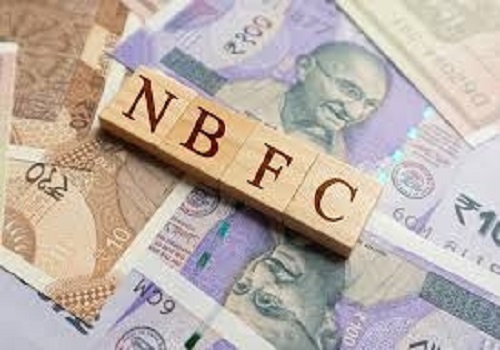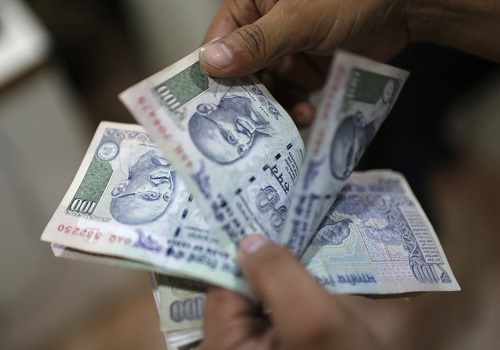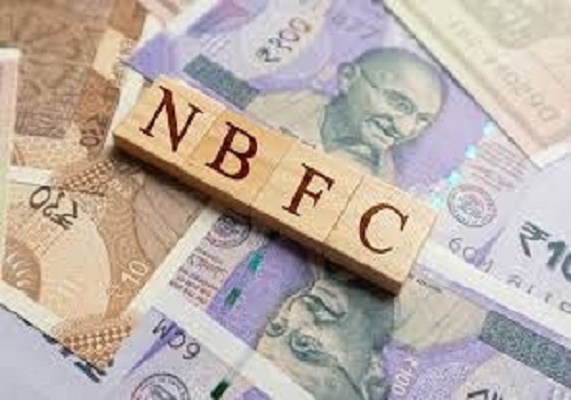Financials - Banks Sector Update : PSBs reporting more resilient loan yield; deposit repricing gaining pace by Motilal Oswal Financial Services Ltd

PSBs reporting more resilient loan yield; deposit repricing gaining pace
Sector margins to bottom out in 2Q; 1-year MCLR dips 10-100bp
* Following a cumulative 100bp repo rate cut in CY25, system yields on fresh loans have eased ~65bp over the past six months, led by an 80bp decline for private banks(PVBs) and a 62bp decline for PSBs. Given that there have been no further rate cuts, NIMs are expected to bottom out, aided by lower proposed risk weights in select segments and lower CRR.
* Despite the 100bp repo rate cut, spreads on fresh rupee loans vs. the repo rate remain elevated at ~394bp for private banks (vs. ~374bp in CY24) and ~256bp for PSBs (vs. ~210bp in CY24), indicating limited room for further decline of ~10-20bp.
* WALR on outstanding loans for the system declined 6bp MoM (3M decline at 35bp), with a 10bp drop for PVBs (3M decline of 43bp) and a 3bp fall for PSBs (3M decline of 30bp).
* The weighted average term deposit rate (WATDR) for the system declined 5bp MoM in Aug’25 to 6.99%, with PSBs and PVBs reporting a 3bp and 4bp fall, respectively. Over the past three months, WATDR has eased ~20bp (17bp for PSBs and 21bp for PVBs). While SA rate declines have already been factored in, TD repricing benefits are expected to flow meaningfully from 2HFY26, aiding margin recovery.
* With the RBI maintaining the status quo in the latest MPC but signaling space for an additional 50bp rate cut (amid softer inflation and moderate growth), funding costs are expected to ease further, supporting NIM improvement in 2H.
* Growth appears to have bottomed out, with early signs of recovery. Policy support, rate cuts, and improving bank traction indicate that credit growth could accelerate to ~11% in FY26E.
* Top picks: ICICI, HDFCB, and SBIN.
WALR on fresh and O/S loans declines ~50bp; further 30-40bp dip possible
* WALR on fresh loans declined 45bp in the last three months, with PVBs seeing a steep decline of 71bp and PSBs reporting a 32bp dip. Over the last six months (i.e., from the first repo cut in Feb’25), the overall WALR on fresh loans declined ~65bp for system, led by an 80bp decline for PVBs and 62bp for PSBs.
* With the 100bp repo rate cut, spreads on fresh rupee loans vs. the repo rate remain elevated at ~394bp for PVBs, compared to an average of 374bp in CY24, indicating that a further decline would be limited at 10-20bp. For PSBs, spreads vs. the repo stand at ~256bp, significantly above the CY24 average of ~210bp, as the repricing is yet to be passed on since PSBs have high linkages to MCLR.
* WALR on outstanding loans eased 6bp MoM to 9.32% in Aug’25 vs. 6bp in Jul’25. Over the past three months, WALR on outstanding loans has corrected by 35bp, with a 43bp drop for PVBs and a 30bp decline for PSBs.
* One-year MCLR for PVBs has dipped 35-100bp over the past year, with banks like IDFC First/IndusInd passing on ~35bp/40bp and KMB passing on a significant 100bp. PSBs, however, have transmitted the rates less aggressively, with reductions limited to 10-40bp, led by Union Bank with a 40bp cut.
WATDR declines at calibrated pace; CoF fall to accelerate from 2HFY26
* WATDR continues its downward trend, albeit at a calibrated pace, falling 5bp in Aug’25. PSBs reported a 3bp decline and PVBs saw a 4bp decline. In the past three months, WATDR has dipped 20bp overall, driven by a 17bp decline for PSBs and a 21bp drop for PVBs.
* While the SA decline has already been accounted, the TD repricing benefit is yet to flow meaningfully and its impact would be visible in 2HFY26.
* Since the mega rate cut of Jun’25, the SA rates have been broadly unchanged; however, mid-size banks that have been aggressive in offering the rates would see a round of cuts in SA rates to protect the NIMs.
* While the RBI kept the repo rate unchanged in the Oct MPC meeting, there now appears to be room for an additional 50bp rate cut. This is mainly due to the downward revision in the inflation forecast to 2.6% from 3.1% earlier (remaining below the 4% target), caution over the impact of tariffs on exports, and GDP growth still trailing the aspirational range of 7-8%. As the full transmission of the 100bp rate cut implemented so far in CY25 and the effects of GST rate rationalization are awaited, we anticipate a possible 50bp rate cut window opening around Dec’25 or Feb’26. This would likely coincide with the beginning of the rate-cutting cycle in the US.
Growth appears to have bottomed out, with early indicators pointing to a gradual pickup
System credit growth in the banking sector stood at 10.4% (2.2% 2QTD and 3.6% YTD), compared with 13% a year ago, reflecting a broad-based slowdown across retail segments and a subdued capex cycle. We believe the credit cycle is poised to pick up amid declining interest rates, along with supportive measures such as GST and income tax cuts. Furthermore, the recent CRR cut and new RBI measures - such as lowering risk weights for MSME and residential home loans, increasing limits on loans against shares (LAS) for banks, and reducing risk weights on NBFC exposures to infrastructure projects - clearly signal a policy-driven push toward growth. This supports our view that credit growth, which has been muted of late, is likely to accelerate. In addition, recent strong business updates from banks such as HDFCB, KMB, RBL, BoB, PNB, INBK, and AUBANK have surpassed our credit growth estimates, indicating that banks are actively driving growth. Although CD ratios have increased, this trend aligns well with the ongoing growth momentum. Consequently, we could upgrade our system credit growth estimates for FY26E to around 11%.
2HFY26: Early signs of recovery would be visible
1) NIMs near trough: Sector margins are expected to hit the bottom in 2QFY26 as the full impact of the Jun’25 rate cut flows through lending yields. With deposit repricing underway and the phased 1% CRR cut infusing ~INR2.5t liquidity, NIM recovery is likely to begin from 2HFY26.
2) Asset quality stable or improving: Stress in unsecured retail (MFI/credit cards) persists but appears to be easing early. Credit costs are expected to normalize in 2H, aided by improved collections and better macro conditions.
3) Earnings at inflection point: 2QFY26 should mark the bottom for earnings (assuming no further cuts), weighed down by weak NIMs and higher credit costs. Growth momentum and margin recovery should drive an earnings rebound from 3QFY26 onward. For 2QFY26E, we estimate PVBs’ PAT to decline 7.3% YoY/6.7% QoQ and PSBs’ PAT to fall 7.1% YoY/1.9% QoQ. For our coverage universe, we estimate PAT to decline 7.2% YoY/4.5% QoQ. We estimate 17.7% PAT CAGR over FY26-28E. A further risk to earnings trajectory emerges from a potential reduction in repo rates, which is not fully factored into our estimates.
Our view: Maintain preference for ICICIBC, HDFCB, and SBI
* For the banking sector, we believe that the margin contraction will deepen in 2Q as banks absorb the full impact of the 50bp repo cut. A CRR-related credit push is anticipated from 3Q, while lower risk weights on MSMEs and housing are going to push retail credit.
* Deposit repricing, CRR benefits, and easing retail/MFI stress should drive margin gains and asset quality improvement, leading to normalized credit costs and an earnings rebound from 2HFY26.
* We continue to prefer ICICI Bank, HDFC Bank, SBI and AU Bank. These banks stand out due to their strong balance sheets, healthy PCR, and relatively better growth prospects, which are expected to help mitigate downside risks to earnings.
For More Research Reports : Click Here
For More Motilal Oswal Securities Ltd Disclaimer
http://www.motilaloswal.com/MOSLdisclaimer/disclaimer.html
SEBI Registration number is INH000000412










More News

Indian General Insurance Sector Update : GST 2.0: New wheels to drive motor insurance growth...














